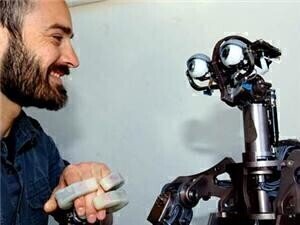Laboratory Products
Are Gene-Editing Tools Too Strong?
Dec 15 2017
Modern science is advancing in leaps and bounds, and now some experts are warning that certain techniques could be too powerful. Targeting current CRISPR gene drives, researchers stress that heritable editing tools need to be coded with reliable "brakes" before being deployed in an outdoor context.
Using a computer simulation program, the team predicted that standard forms of CRISPR gene drives are powerful enough to accelerate tweaked DNA so fast that just a few stray animals or plants could trigger an outbreak. According to critics, this could have unknow, potentially devastating repercussions for ecosystems across the globe.
“We need to get out of the ivory tower and have this discussion in the open, because ecological engineering will affect everyone living in the area,” warns Kevin Esvelt a co-author of the study.
Protecting global ecosystems
He asserts that while a certain species may be considered a pest in one area, it could be a valued member of the ecosystem in another. For this reason, the use of CRISPR gene drives could require consulting environmental agencies in every area a species is found. This could encompass states, countries and even continents.
So what exactly is CRISPR gene drive technology? In the wild organisms have a 50% chance of passing a gene on to their offspring. In comparison, a gene drive guarantees the process by actively copying and pasting itself into chromosomes passed down from both parents.
When it comes to protecting native wildlife from invasive species the concept could prove to be extremely valuable. For example, in New Zealand the government is fighting to protect local species by killing off invaders like rats, stoats and possums. Gene drives could make mass extermination a reality. However without the right precautions in place geneticists like Neil Gemmell warn that gene drives could quickly go rogue and “are probably too powerful for us to seriously consider deploying in conservation."
Introducing the "daisy drive"
Researchers are currently looking at ways to mitigate the risk, including the development of a weaker system called a daisy drive. It would essentially split up guide RNAs which are key components of the drive. The guide RNAs would then direct gene-editing instructions to specific DNA targets, which would then snip out unwanted genetic material and replace with different code.
While DNA is considered the building block of life, proteins created by genetic "recipes" carry out all the work. Spotlighting the latest ESP technology, 'Discovering Hidden Protein Interactions - Capturing Weak Protein-Protein Interactions with Exclusion-based Sample Preparation' offers a unique glimpse at the mechanics of cellular processes.
Digital Edition
Lab Asia 31.2 April 2024
April 2024
In This Edition Chromatography Articles - Approaches to troubleshooting an SPE method for the analysis of oligonucleotides (pt i) - High-precision liquid flow processes demand full fluidic c...
View all digital editions
Events
Apr 28 2024 Montreal, Quebec, Canada
May 05 2024 Seville, Spain
InformEx Zone at CPhl North America
May 07 2024 Pennsylvania, PA, USA
May 14 2024 Oklahoma City, OK, USA
May 15 2024 Birmingham, UK



.jpg)














